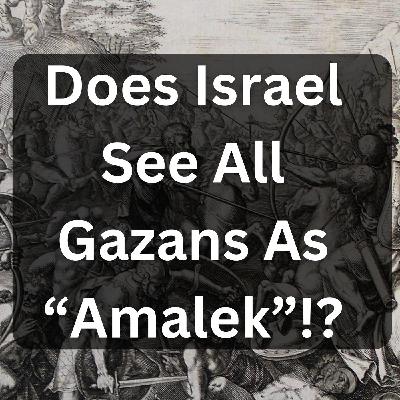The Green Line: Jerusalem's Invisible Border
Update: 2023-12-31
Description
Look at any map of Jerusalem and you may notice the existence of several unusual dotted lines throughout the city and - most peculiarly - one circumscribing the Mount Scopus campus of Hebrew University.
These lines reflect the so-called green line / 1949 Armistice Agreement boundaries and served as the basis for the Kav Ironi (Municipal Line) that ran through Jerusalem as a physically demarcated border between Israel (west) and Jordan (east) for a 19 year period.
Today, and following the 1967 Six Day War, the borders are entirely invisible on the ground, although they mark the symbolic divide (the so-called 'seam') that divides Jerusalem along political and demographic lines.
The Museum on the Seam (MOTS) is located on the seam where the Mandelbaum Gate once provided exceptional passage between West Jerusalem and the Mount Scopus Enclave.
Why two lines? These reflect the former No Man's Land that was created in the gaps between the ceasefire lines demarcated by Moshe Dayan (for Israel) and Abudallah a-Tell (for Jordan).
The gaps created a large enclave in the area that is now populated by Armon HaNatsiv and around the Old City of Jerusalem. During the time when the border was physically in place, this area was extensively covered in barbed wire and other fortifications.
These lines reflect the so-called green line / 1949 Armistice Agreement boundaries and served as the basis for the Kav Ironi (Municipal Line) that ran through Jerusalem as a physically demarcated border between Israel (west) and Jordan (east) for a 19 year period.
Today, and following the 1967 Six Day War, the borders are entirely invisible on the ground, although they mark the symbolic divide (the so-called 'seam') that divides Jerusalem along political and demographic lines.
The Museum on the Seam (MOTS) is located on the seam where the Mandelbaum Gate once provided exceptional passage between West Jerusalem and the Mount Scopus Enclave.
Why two lines? These reflect the former No Man's Land that was created in the gaps between the ceasefire lines demarcated by Moshe Dayan (for Israel) and Abudallah a-Tell (for Jordan).
The gaps created a large enclave in the area that is now populated by Armon HaNatsiv and around the Old City of Jerusalem. During the time when the border was physically in place, this area was extensively covered in barbed wire and other fortifications.
Comments
In Channel







